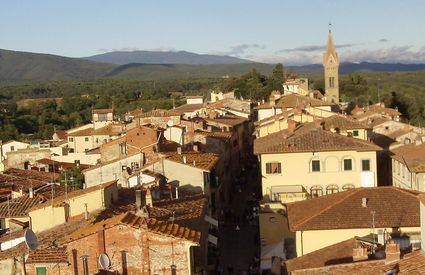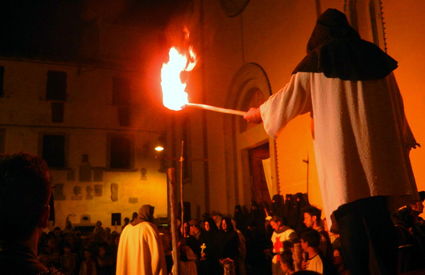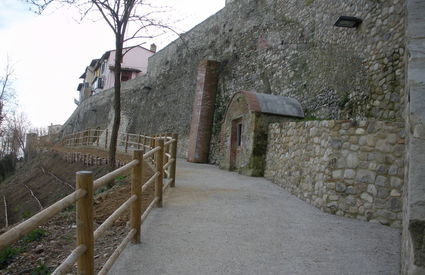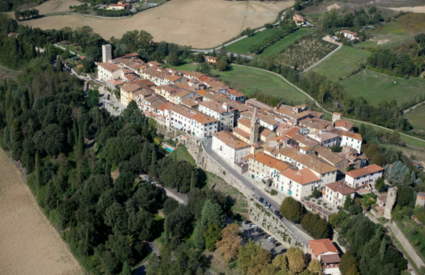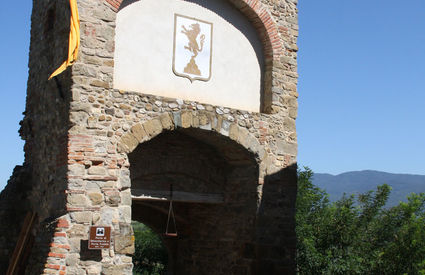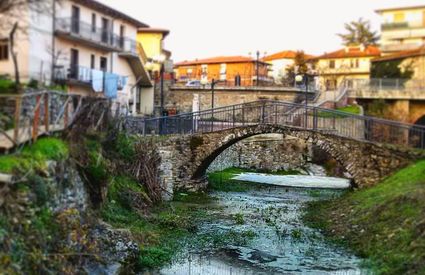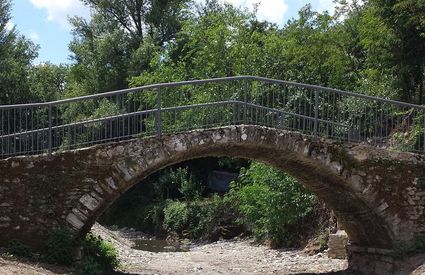Laterina e Pergine Valdarno
A thousand-old village
Culture and tradition amid farming and industrial memories
A thousand-old village
Culture and tradition amid farming and industrial memories
The old village centre
When you reach Laterina do not be
surprised if you are stared at by the locals as you enter the main piazza. A
medieval village perched on a hill right on the edge of the large Arno
flood plain, Laterina has a mostly conservative population attached to
tradition. The centre comes alive with historical and artistic
reconstructions of especial prestige and is home to important historic
buildings such as the tower and palace of the Guinigi family, the church of
Santi Ippolito e Cassiano, and the sixteenth-century oratory of San Rocco e La
Rocca. The old village centre is also home to the Theatre, recently
restored and reopened. Coming down the hill, we can admire another two
important churches dedicated to the Virgin Mary: the churches of Santa Maria in
Valle and Madonna della Neve.
Do not be surprised if you are stared at by the locals and immediately become a
matter for “discussion” under the "loggias" while you eat a
roll washed down with a nice glass of red wine intent on conversing with a 'terinese, who will tell you all about past
times, the huge reception centre housing Istrian refugees or the entertaining
rivalry with Ponticino, the largest fraction in the municipality.
Orbiting around the Tuscan town are the "very lively" Casanuova,
Vitereta with its lovely church and Latereto, former headquarters of the
historic brick kilns. Having passed by the impressive Monsoglio Villa, we reach
the historical village of Penna, with the sheer face of its dam.
Connected by a bridge
Up until 1960 Laterina and Ponticino were
separated by the River Arno and they were connected by one means alone: the
"Lillino" boat. In 1960 the Catolfi bridge was built between the two
towns, a 64-metre-long construction in reinforced concrete, the only connection
between the towns.
Ponticino was founded with the construction of the railway station in the late
1800s, through which the Florence-Rome train line runs as well as the regional
route, known to all locals as "La Nazionale" (the national).
The small Romanesque bridge over the Ganascione torrent, after
which it takes its name, and Impiano, the little village along the
ancient Roman road that joined the Cassia Vetus con its newer version, are its
links with the past.
Ponticino was mostly populated by "commuter workers", who took the
train to Florence from the station, which everyone called "il
locale". Later, thanks to the goldsmithing boom with Arezzo and with a
small yet important industrial sector in the area, many found work near their
homes.
Thanks above all to the creation of numerous social and cultural volunteer
associations, the village is a thriving
place, brimming with local and provincial activities. The priest Don Luigi
is a constant presence in the town – he led this community from after World War
II to 2014.


